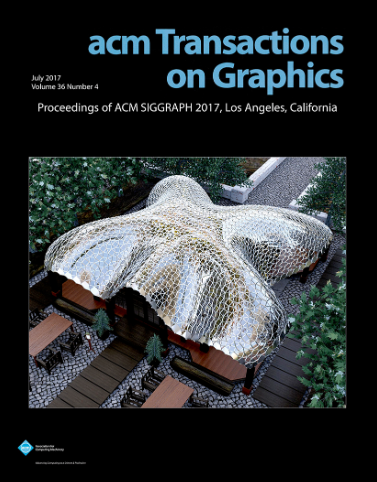Theory of Human Tetrachromatic Color Experience and Printing
IF 7.8
1区 计算机科学
Q1 COMPUTER SCIENCE, SOFTWARE ENGINEERING
引用次数: 0
Abstract
Genetic studies indicate that more than 50% of women are genetically tetrachromatic, expressing four distinct types of color photoreceptors (cone cells) in the retina. At least one functional tetrachromat has been identified in laboratory tests. We hypothesize that there is a large latent group in the population capable of fundamentally richer color experience, but we are not yet aware of this group because of a lack of tetrachromatic colors in the visual environment. This paper develops theory and engineering practice for fabricating tetrachromatic colors and potentially identifying tetrachromatic color vision in the wild. First, we apply general d -dimensional color theory to derive and compute all the key color structures of human tetrachromacy for the first time, including its 4D space of possible object colors, 3D space of chromaticities, and yielding a predicted 2D sphere of tetrachromatic hues. We compare this predicted hue sphere to the familiar hue circle of trichromatic color, extending the theory to predict how the higher dimensional topology produces an expanded color experience for tetrachromats. Second, we derive the four reflectance functions for the ideal tetrachromatic inkset, analogous to the well-known CMY printing basis for trichromacy. Third, we develop a method for prototyping tetrachromatic printers using a library of fountain pen inks and a multi-pass inkjet printing platform. Fourth, we generalize existing color tests - sensitive hue ordering tests and rapid isochromatic plate screening tests - to higher-dimensional vision, and prototype variants of these tests for identifying and characterizing tetrachromacy in the wild.人类四色色彩体验和印刷理论
基因研究表明,50% 以上的女性在基因上是四色体,在视网膜上表达四种不同类型的颜色感光细胞(视锥细胞)。在实验室测试中,至少发现了一种功能性四色体。我们假设,在人群中有一大批潜在的群体能够从根本上获得更丰富的色彩体验,但由于视觉环境中缺乏四色色彩,我们尚未意识到这一群体的存在。本文提出了制作四色色彩的理论和工程实践,并有可能识别野生四色色彩视觉。首先,我们应用一般的 d 维色彩理论,首次推导并计算出人类四色性的所有关键色彩结构,包括可能物体色彩的 4 维空间和色度的 3 维空间,并得出预测的 2 维四色色调球。我们将这一预测色相球与我们熟悉的三基色色相圈进行了比较,从而扩展了理论,预测了更高维度的拓扑结构如何为四色人带来更丰富的色彩体验。其次,我们推导出理想四色油墨集的四种反射率函数,类似于著名的三基色 CMY 印刷基础。第三,我们利用钢笔墨水库和多通道喷墨打印平台,开发了一种四色打印机原型制作方法。第四,我们将现有的色彩测试--灵敏色调排序测试和快速等色板筛选测试--推广到更高维度的视觉中,并开发了这些测试的原型变体,用于在野外识别和描述四色性。
本文章由计算机程序翻译,如有差异,请以英文原文为准。
求助全文
约1分钟内获得全文
求助全文
来源期刊

ACM Transactions on Graphics
工程技术-计算机:软件工程
CiteScore
14.30
自引率
25.80%
发文量
193
审稿时长
12 months
期刊介绍:
ACM Transactions on Graphics (TOG) is a peer-reviewed scientific journal that aims to disseminate the latest findings of note in the field of computer graphics. It has been published since 1982 by the Association for Computing Machinery. Starting in 2003, all papers accepted for presentation at the annual SIGGRAPH conference are printed in a special summer issue of the journal.
文献相关原料
| 公司名称 | 产品信息 | 采购帮参考价格 |
|---|
 求助内容:
求助内容: 应助结果提醒方式:
应助结果提醒方式:


